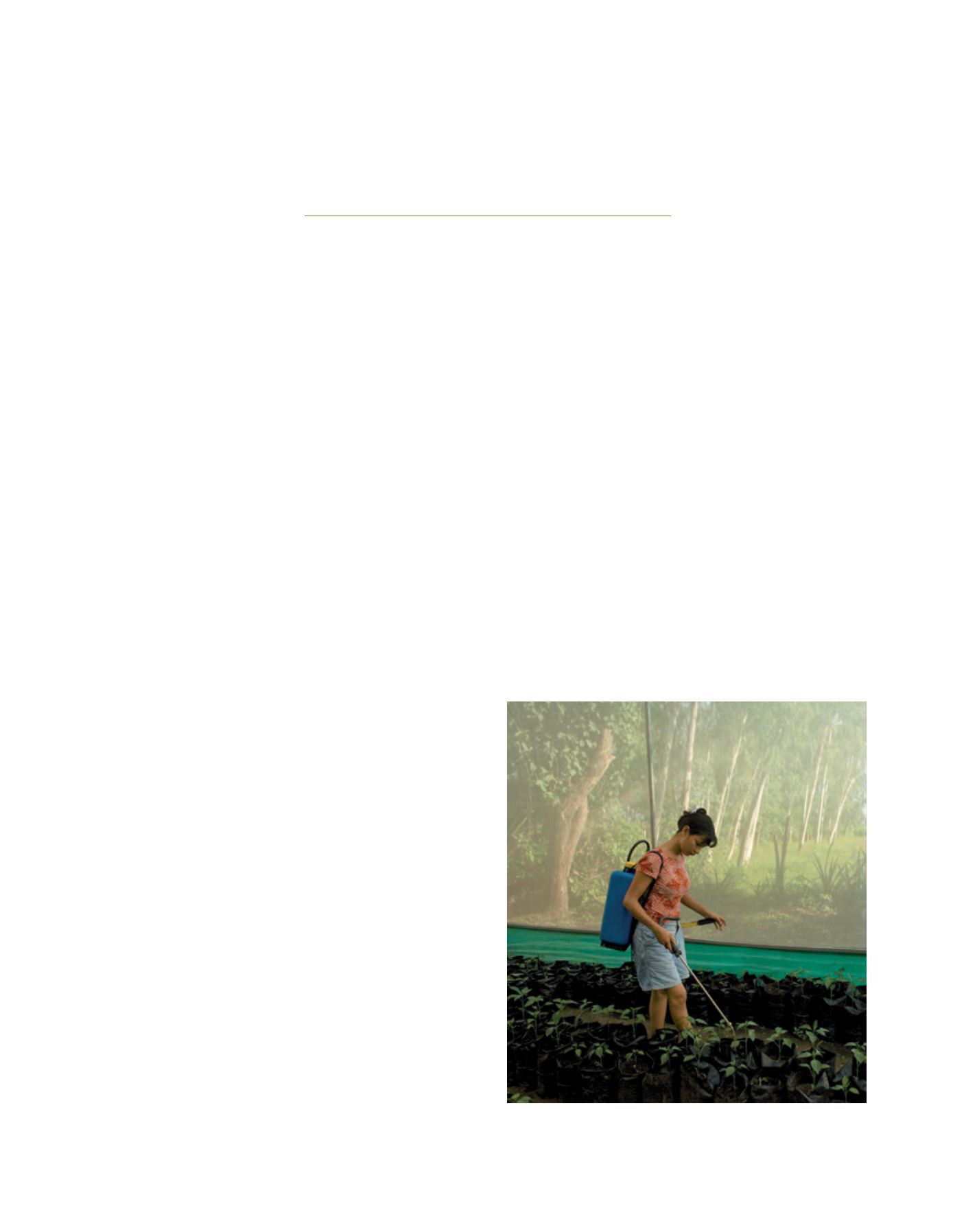

[
] 184
Investing in family farmers
for the future we want
Ra
ş
it Pertev, Secretary of IFAD
F
amily farmers are women and men involved in any
area of agriculture who derive a significant portion
of their income or food from working and managing
their own farm or livestock, relying exclusively or predom-
inantly on family labour and capital. Family farms are
a global phenomenon. They are extremely diverse across
countries, regions and production systems. A common
feature is that the family and the farm are closely linked,
coevolve and combine economic, environmental, social
and cultural functions. In fact, family farming is the domi-
nant model of agriculture, and its prevalence across areas
with diverse levels of development suggests that family
farming offers specific comparative advantages to other
forms of agriculture.
It is estimated that smallholder family farmers produce four-
fifths of the food consumed in the developing world. These
women and men are key contributors to local, national and
global food security. They are custodians of vital natural
resources and biodiversity, and central to climate change
mitigation and adaptation. Despite this reality, they are dispro-
portionately represented among the world’s poor people. The
potential economic and social returns to investing in family
farms are enormous, yet remain frequently neglected.
The International Fund for Agricultural Development
(IFAD) has always recognized this. Awareness of the wide-
ranging potential returns of investing in smallholder family
farmers was one of the main rationales behind the estab-
lishment of IFAD in 1977 as the United Nations specialized
agency and international financial institution focusing exclu-
sively on agricultural and rural development. It is why IFAD
has, over the course of decades, invested over US$15 billion
in grants and low-interest loans to developing countries
through projects empowering more than 430 million rural
people to break out of poverty, thereby helping to create
vibrant rural communities.
As the post-2015 global development agenda takes
shape, the world faces a historic opportunity to put in
place measures to shape the future we want. There is now
wide agreement that a shift to development models that
are sustainable, inclusive and equitable is indispensable to
complete the task of eradicating poverty. This shift in think-
ing about development has important implications for the
types of investments and policies to be prioritized. It also
offers a potentially ground-breaking opportunity to address
the structural causes of poverty.
The debate goes on against a background of social,
economic, political and ecological changes that are reshap-
ing the conditions, challenges and opportunities faced by the
estimated 842 million poor and hungry people in the world
today. Key factors include higher and more volatile food
prices, a projected 60 per cent increase in demand for agri-
cultural products by 2050 and the growing tension between
a more populated and urbanized world and a more fragile
planet and unpredictable climate.
One thing that has not changed, however, is that the majority
of the world’s poor people still live in rural towns and settle-
ments. For most of them, family farming is a vital part of their
livelihoods. Hence, if poverty is to be reduced on a broad scale
and global food security is to be achieved, investments that
help family farmers improve their livelihoods are and will
remain critical. Investments are needed in key areas such as
rural infrastructure, on-farm irrigation and equipment, research
and extension systems, and risk mitigation mechanisms. Family
farmers also need favourable policies, supportive institutions,
Image: IFAD/Pablo Corral Vega
The Reconstruction and Rural Modernization Programme in El Salvador
contributed to the empowerment of women
D
eep
R
oots
















